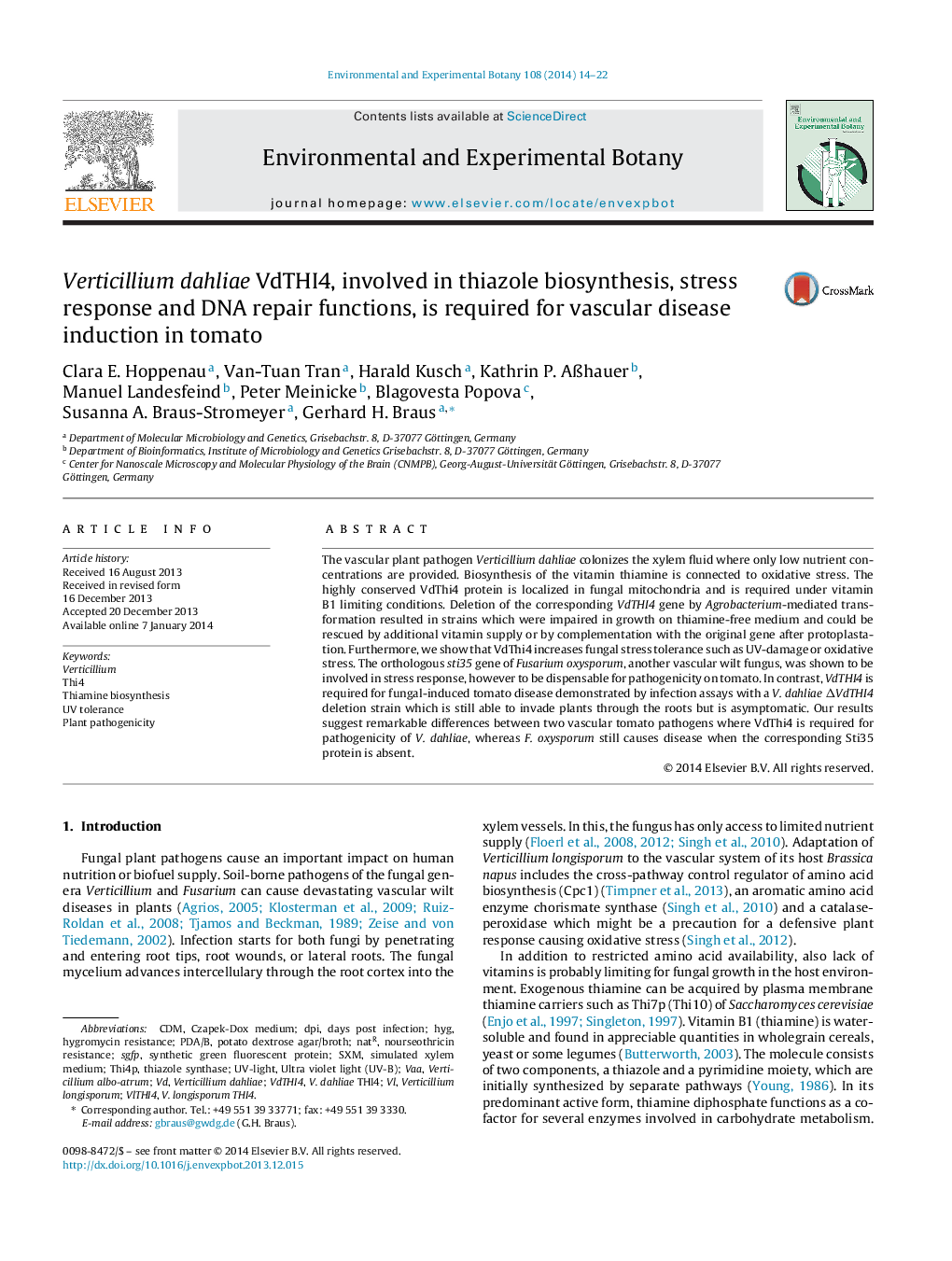| Article ID | Journal | Published Year | Pages | File Type |
|---|---|---|---|---|
| 4554362 | Environmental and Experimental Botany | 2014 | 9 Pages |
•Verticillium dahliae VdTHI4 is required for fungal pathogenicity in tomato.•VdThi4 protein is localized in mitochondria.•VdThi4 protein is required for stress tolerance against UV-damage and oxidative stress.•Verticillium dahliae VdTHI4 is involved in fungal thiamine supply.
The vascular plant pathogen Verticillium dahliae colonizes the xylem fluid where only low nutrient concentrations are provided. Biosynthesis of the vitamin thiamine is connected to oxidative stress. The highly conserved VdThi4 protein is localized in fungal mitochondria and is required under vitamin B1 limiting conditions. Deletion of the corresponding VdTHI4 gene by Agrobacterium-mediated transformation resulted in strains which were impaired in growth on thiamine-free medium and could be rescued by additional vitamin supply or by complementation with the original gene after protoplastation. Furthermore, we show that VdThi4 increases fungal stress tolerance such as UV-damage or oxidative stress. The orthologous sti35 gene of Fusarium oxysporum, another vascular wilt fungus, was shown to be involved in stress response, however to be dispensable for pathogenicity on tomato. In contrast, VdTHI4 is required for fungal-induced tomato disease demonstrated by infection assays with a V. dahliae ΔVdTHI4 deletion strain which is still able to invade plants through the roots but is asymptomatic. Our results suggest remarkable differences between two vascular tomato pathogens where VdThi4 is required for pathogenicity of V. dahliae, whereas F. oxysporum still causes disease when the corresponding Sti35 protein is absent.
